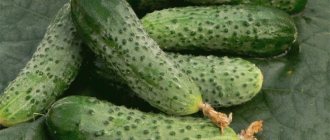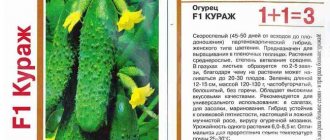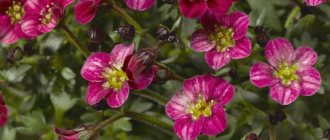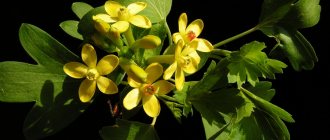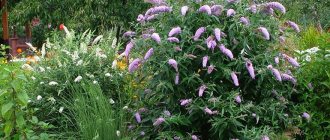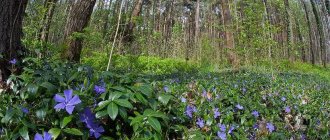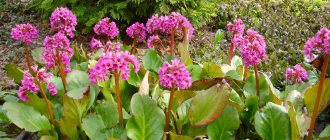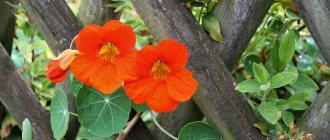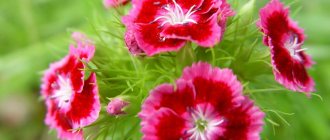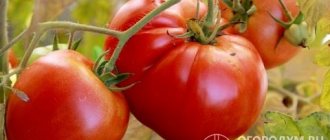Golden currant - what is it?
Golden currant is a fruit shrub from the Gooseberry family, found naturally in Canada and North America. The plant is grown in cultivated plantings all over the world, and in Russia it appeared at the end of the 19th century thanks to the efforts of the famous breeder Michurin, who also developed one of the first Russian varieties called Krandal Seedling.
Golden currant is a low shrub up to 2.5 m in height with red bark of shoots. The leaves of the plant resemble gooseberry leaves, the bush blooms very abundantly, occurs at the end of May and lasts almost 3 weeks. The flowers have a rich yellow tint, which is how the plant got its name.
The shrub bears orange, black or burgundy berries depending on the variety. A distinctive feature of the species is its high yield; on average, from 5 to 15 kg of fruits are collected from an adult bush.
Let's get acquainted
Golden currant will become a real decoration of the garden - during the flowering period, no one can compare with it in beauty!
This is the only currant that did not get its name from the color of the berries. It is precisely because of its dazzling yellow flowers that abundantly dot the bush that the species received its name.
Currant flowers have a bright, rich aroma that can be felt from afar.
- The middle of summer comes, and the delicate beauty finally bears fruit. And she is still beautiful. Its oval or round berries are very shiny and seem to glow in the sun. Multi-colored fruits can reach a weight of up to 3 grams.
The taste of golden currant berries may seem unusual to lovers of black currants.
They are denser and stronger (which, by the way, is very good for transportation). From the fruits of this beauty you can make delicious jams, preserves, jellies, desserts, fruit drinks and compotes.
Cool autumn will soon arrive. Powerful currant bush (golden currant can grow up to 2.5-3
m) is transformed again.
This time the bush changes the color of the leaves (some become purple, and on many leaves various variegated spots appear - yellow or red).
♦ Are there any disadvantages to golden currants? Golden currant bushes do not really favor wet weather - at such a time the beautiful fruits can crack, and the crop itself prolongs the ripening period of the berries.
This not very pleasant nuance is more than covered by the numerous advantages of the beauty: golden currants perfectly withstand any adversity: dust, smog, drought, heat, cold, smoke, disease and pest attacks.
- Even in particularly cold winters (when frosts drop below 30° C), although the currant freezes a little, it recovers completely and quickly.
What are the benefits of sunberry?
Golden currant is not as rich in vitamin C as its black-eyed sister. But golden currant berries store a lot of carotene (vitamin A).
The golden berry is ahead in quantity even of sweet peppers and apricots.
In addition to vitamins, the golden beauty contains a number of very useful substances for humans: pectin and tannins. The berry contains many acids important for the body, especially succinic, malic and citric.
What the fragrant beauty is especially rich in is its high content of coumarins.
These organic natural compounds help reduce the level of blood clotting (this ability is important for protection against the occurrence of heart attacks).
The berry is very useful for people with diabetes, because the fruit also contains insulin-like substances.
- The berries retain all their usefulness in any processed products.
Fruit drinks, juices and compotes made from golden currants are effective as refreshing and antipyretic agents.
Healthy drinks are able to remove harmful salts, waste, and toxins from the body, they improve appetite and perfectly increase performance.
And increased iron content is useful in the treatment of anemia (anemia). The berries also provide benefits for sclerosis and hypertension.
Attention! It is important! Young leaves and buds of golden currant are poisonous! They have hydrocyanic acid. It is strictly forbidden to make tea or any tinctures from them! This golden treasure has only its berries for food!
Pros and cons of golden currant
Before planting shrubs on their site, gardeners are interested in the advantages and disadvantages of the crop. The advantages of the plant include:
- high productivity;
- late flowering, thanks to which the plant does not suffer from return frosts;
- undemanding to conditions - the shrub easily tolerates drought, heat, temperature changes and rocky soils;
- frost resistance, even in the northern regions the shrub can be grown without effort; it tolerates cold temperatures down to -30 °C.
However, culture also has certain disadvantages:
- with severe deficiency of moisture or nutrients, the shrub may shed its ovaries;
- at high humidity levels the fruits may crack;
- ripe currants are often torn from the stalk when harvested, which is why their presentation is lost and shelf life is reduced;
- new shoots of golden currants may freeze slightly in the fall, since they do not always have time to finish the growing season.
Important! Golden currant leaves are not suitable for use in decoctions and teas; they contain hydrocyanic acid, which is dangerous to human health.
Advantages and disadvantages
Pros:
- high winter hardiness;
- drought and heat resistance;
- rapid growth of shoots;
- immunity to most diseases of the family;
- resistance to urban air pollution;
- high decorativeness of the bush and fragrant flowering;
- good berry taste;
- regular fruiting and high yield;
- The plant is a good honey plant.
Minuses:
- self-sterility of many varieties;
- large dimensions of the plant;
- cracking of berries in rainy summers;
- the presence of seeds in the pulp and a long tail on the berry;
- small fruit size in many varieties.
Do you grow golden currants?
Not really
Varieties of golden currant
Golden currants are represented by many varieties; they differ among themselves in frost resistance, yield, color and taste of the fruit. Before planting golden currants on your site, you should familiarize yourself with the most popular varieties.
Golden currant Shafak
Among the varieties of golden currants for the Moscow region, Shafak is popular. The main characteristic of the variety is good resistance to winter frosts and summer heat. Pests also attack the plant very rarely; from mid-summer to autumn, up to 8 kg of berries can be collected from the bush. The fruits have a rich dark burgundy color and taste sweet with a slight sourness.
Golden currant Venus
The plant tolerates drought and high temperatures well, and also survives winter frosts down to -40 °C. The shoots of the plant are not very long; on each branch a cluster of several black round berries with thin skin ripens. Description of golden currant Venus states that up to 8 kg of fruit can be collected from a bush, and their taste is very pleasant - sweet, with a slight sour tint.
Golden currant Laysan
Frost-resistant and tolerant of hot conditions, the variety is suitable for cultivation in most regions. No more than 6 individual oval-shaped fruits ripen on the clusters of the Laysan variety. The berries have a golden hue, and in general the fruits slightly resemble gooseberries. The productivity of the plant is very high, up to 9 kg. At the same time, the bush can be grown, including for the sale of berries; the fruits are stored for a long time and are suitable for transportation.
Golden currant Siberian sun
It tolerates severe winter frosts well and is characterized by increased resistance to fungal diseases and harmful insects. The plant usually bears fruit in mid-summer, the berries are golden or rich amber in color, the fruits are large and tasty, with a slight refreshing sourness.
Golden currant Gift to Ariadne
This variety is characterized, first of all, by good tolerance to frost and summer drought. The plant is rarely affected by pests and fungi and can produce up to 8 kg of tasty berries from one bush. The golden currant berries of this variety are sweet and sour with a light, pleasant aroma.
Golden currant Kishmishnaya
This variety of golden black currant ripens small berries, slightly reminiscent of a heart in shape. The plant bears fruit very abundantly - you can collect up to 10 kg of berries from it annually. Currants are sweet, dessert-like in taste, a slight sourness is felt in it, but does not impair the taste. The variety tolerates harsh growing conditions in both southern and northern regions.
Golden currant Isabella
The berries of this variety are very small and have a dark, almost black tint. Despite their small size, the fruits of the currant bush have good taste. During the warm season, from the beginning of fruiting until autumn, about 6 kg of berries can be harvested from Isabella.
Golden currant Ida
The variety is universal, in other words, it is well suited for eating fresh berries and for preparations. The fruits of the plant are round, black in color, each bush is capable of producing up to 5 kg of harvest. The Ida variety shrub tolerates severe frosts and extreme heat well and rarely suffers from diseases and harmful insects.
Golden currant Black pearl
A low-growing and frost-resistant variety with average yields. Currants of this type are capable of producing up to 4.5 kg of fruit from one bush; the berries of the variety are black, sweet and sour, slightly reminiscent of blueberries.
Tricks of agricultural technology
It is best to plant golden currants in autumn or very early spring (but with the condition that sudden frosts do not occur).
The growing season for the crop lasts from April to September.
- Ideally, golden currant varieties should be planted before sap flow or after it ends.
Golden currant seedlings, which are sold from nurseries in pots (they have a closed root system), can be planted at any convenient time (spring-autumn).
Buy young plants with developed shoots (there should be at least 3-4 of them) and a strong root system.
♦ Where to plant. Choose a place for the beauty with good lighting (but a little partial shade will not harm her). The shrub can take root well on slopes or on the plain.
Growing currants is completely uncomplicated - after all, the golden treasure does not impose any special conditions on the soil. It grows quietly on poor, meager lands.
♦ Planting. Before planting, prepare holes 50 x 60 cm. They must be filled with rotted manure or compost, and a glass of superphosphate or ash should be mixed into them.
Young (2-3 year old) seedlings are planted according to a 2.4 x 1 m pattern. In this case, the root collar of the bush should be deepened by 6-7 cm.
This will speed up the appearance of adventitious roots and stimulate the growth of shoots.
♦ We take care. Caring for golden currants is completely simple. Every year, dig up the soil between the rows, apply fertilizers on time (we fertilize them, like other types of currants), trim the branches and, if necessary, water.
- The branches that are pruned are those that help thicken the bush and prevent the sun from penetrating into the middle of the plant. Also remove diseased and dried shoots that are more than 3 years old. Golden currant varieties produce fewer berries on older branches.
If a young currant has grown too much, it needs to be thinned out (cut out all unnecessary young growth).
The crop should be pruned either in the spring (before the buds swell) or in the fall (after the end of leaf fall).
There is often no need to water the crop (in some cases, rain will be enough). After all, golden currants are drought-resistant.
Water it only if the period is too dry, also during the ripening of the berries.
This is such a wonderful berry - golden currant! Let me also remind you why it is so good and why you should definitely have it in your garden:
- Incredibly impressive and beautiful, capable of decorating a personal plot.
- Practically does not get sick and is not damaged by pests.
- Grows on any soil, except heavily clayey and damp.
- It has very fragrant flowers and is an excellent honey plant.
- Frost-resistant, drought-resistant, unpretentious.
- Can be used as a hedge.
- Very high-yielding, and from summer until frost, when other berries no longer bear fruit.
- The berries are strong and sweeter than other currants.
See you soon, dear readers!
The benefits of golden currants
Golden currants not only have high dessert properties, but also provide health benefits. First of all, it contains a lot of vitamins C, B and A - the berries are useful for preventing colds, they can be used to strengthen blood vessels and the heart, and to take care of the health of the skin and eyes.
The fruits of the cultivated plant have a slight sourness, but their taste is mainly sweet. Therefore, people with a tendency to flatulence, gastritis and other gastric diseases can consume the fruits without fear. Berries improve digestion and do not provoke exacerbations of chronic ailments.
Harvest and storage
In most modern varieties, the berries ripen smoothly and adhere well to the shoots, so not only manual picking is used, but also mechanized picking. For further storage, collection with brushes is preferable.
Dry and clean berries can be stored in the refrigerator or cellar for up to 10 days.
Golden currants are actively processed, making jam and compotes from them. The fruits can be frozen and dried.
Golden currant hedge
Decorative golden currant is often used in landscape design; the shrub is easy to shape and blooms very beautifully. The leaves of golden currant are also decorative; in autumn they are colored with yellow-orange and crimson tones.
Golden currants are often used to create hedges. The shrub grows quite quickly, which allows you to form the desired landscape in a few years. And caring for golden currants is easy; they tolerate pruning well and quickly restore their green mass, maintaining the desired outline.
History of selection
The species became widespread as a productive crop in the 19th century. Initially, the crop was grown as an ornamental plant, as a hedge and as a honey plant.
Later, gardeners appreciated the taste of the berries, and selection continued in the direction of increasing the yield and quality of the fruit.
One of the oldest varieties of golden currant is considered to be Crandal, an American selection, which formed the basis for many domestic varieties. Ivan Michurin is considered a pioneer in the creation of Russian varieties of golden currants. His first creation was the "Krandal Seedling".
Features of growing golden currants
In general, caring for fruit bushes should be carried out quite standard. But there are some peculiarities.
- Golden currant is a shrub that requires cross-pollination by insects. Therefore, to obtain a harvest, it is necessary to plant 2 or 3 plant varieties next to each other at once, otherwise the ovary will fall off.
- Golden currants are sensitive to light. The shrub cannot be grown in the shade; the plant needs a sunny, warm place.
Also, golden currants need to be protected from the wind during flowering - drafts can lead to premature shedding of flowers.
The best varieties for the Moscow region
Expert opinion
Chernyaeva Tatyana Dmitrievna
Absolutely loves gardening and grows only organic vegetables
Ask a Question
All varieties of golden currants tolerate winter cold well, so the crop takes root well in the north. However, not all seedlings are able to survive in conditions of high soil and air humidity in summer, which is typical for the Moscow region.
For cultivation in the Moscow region, it is recommended to purchase varieties resistant to fungal diseases:
- Shafak;
- Laysan;
- Muscat;
- Venus.
Planting and caring for golden currants
Photos, descriptions and reviews of golden currants confirm that caring for the shrub is quite simple. It is enough to follow the basic rules, and the plant will delight you with abundant flowering and good harvests.
Selection and preparation of a landing site
It is recommended to plant golden currants in open ground in the spring - immediately after the soil has thawed a little. Autumn planting is also allowed, but in this case it should be done no later than a month before the arrival of frost, in September-October.
- Almost any soil is suitable for growing golden currants, alkaline and acidic, dry and moist, loamy and sandy loam.
- The main thing is that groundwater does not pass close to the surface of the earth, otherwise the area will be too swampy.
- The plant is also very demanding on lighting; it is best to plant it on a southwestern or western flat area or a small slope protected from the wind.
Before planting golden currants, it is recommended to prepare the soil. It is necessary to loosen and weed the soil, and a week before planting the bush, add potassium fertilizers and about 6 kg of compost per 1 sq. m. m of soil. You can also sprinkle the area with wood ash.
The soil mixture for golden currants is prepared as follows:
- dig a hole in the area about 50 cm deep and wide;
- fill it with soil prepared from humus and fertile soil in a 1:1 ratio;
- add 200 g of superphosphate and a little nitroammophoska.
Important! If you need to plant several bushes of a plant at once, you must leave 1.5 m of free space between them, and 3 m between the rows of bushes.
Landing rules
Before planting golden currants, it is necessary to place the seedling together with a ball of earth in a bioactive solution for 2 hours or place it in a container with water for 2 days.
- A golden currant seedling is lowered into a prepared hole, filled to the middle with soil mixture.
- The roots of the plant are sprinkled with the remaining soil so that the root collar of the plant remains buried about 5 cm.
- The seedling is installed at a slight angle - this facilitates the growth of new roots.
After planting, the soil around the plant should be lightly compacted and watered thoroughly with 3-4 buckets of water. Also, the seedlings need to be trimmed, leaving only 5-6 buds, this will facilitate the establishment of the bush in a new place.
Watering and fertilizing
For healthy development, fruit bushes need proper watering. The frequency of watering depends on the age of the plant and weather conditions.
- It is recommended to water young plants at least once a week - they need moisture for rapid growth.
- Mature fruit bushes can be watered only about 5 times during the entire growing season, the main thing is that the soil remains moist during the period of ovary formation.
- During drought, it is necessary to focus on the condition of the soil; if the soil under the bushes of the plant dries out quickly, the frequency of watering can be temporarily increased.
Each adult bush of a fruit plant requires 3 buckets of water; young plants need 2 buckets. You need to water the bush carefully, making sure that less water gets on the leaves.
As for fertilizing, golden currant does not make excessive demands on the nutritional value of the soil. After planting for the first time, you will need to feed it only after 2 years, while it is recommended to place complex mineral fertilizers and manure in the grooves made in the soil at the roots.
For better growth and fruiting, the plant can be annually supplied with nitrogenous fertilizers in the spring and organic fertilizing in the autumn.
Trimming
From time to time the plant needs to be trimmed; golden currants can be pruned in the fall after leaf fall or in the spring before buds appear. The first pruning for shrubs is carried out only a year after planting, and is carried out according to the following principles:
- remove dry and broken branches;
- completely cut off weak root shoots that prevent the growth of the rest of the bush;
- if necessary, trim shoots that violate the geometry of the bush; this is important to do if golden currants are used to decorate the landscape.
Attention! From the point of view of fruiting, shoots up to 6 years old are productive - older branches no longer take part in the harvest.
After approximately 12 years of life, golden currants begin to age and slow down their growth; during this period, anti-aging pruning can be done. In the process, the young annual growth is completely removed, leaving only about 5 strong developed shoots, and after another year the tops of the basal shoots are pinched to form branching. The same procedure is repeated in subsequent years, the formation of a rejuvenated bush ends after 4-5 years.
Preparing for winter
Most varieties of golden currant are characterized by increased frost resistance; the plant tolerates temperatures well down to - 25-30 ° C. However, it is still recommended to cover the shrub for the winter; in this case, frosts will definitely not affect future yields.
- For the winter, it is recommended to bend the branches of golden currants and press them to the ground. You can fix the shoots using staples or simply press down individual branches with heavy stones or bricks.
- The branches are wrapped with covering material - this will protect the shoots from freezing. For each branch it is necessary to build a personal shelter; if you cover the entire bush, this will be of little benefit.
- You can also simply cover the bush of a fruit plant with a mound of earth. If the winter is snowy, you can build a snow cushion about 10 cm thick over the bush.
Properly covered garden shrubs can withstand frosts down to -40°C.
Advice! It is best to use agrofibre in combination with mineral wool as a covering material. It is not recommended to use polyethylene; the plant will not receive oxygen under it.
Nuances of sunny berries
The golden sister differs from its relatives (red and black currants).
Golden currant grows very actively in the first year of its life, the next year its growth slows down slightly, and it begins to bear fruit in the 3rd year of living in the garden.
- Golden currant pleases with the harvest longer on its skeletal branches, unlike its black-eyed sister, which loses its yield as it grows older. The apical bud of a golden-looking currant can produce a shoot up to 20 cm in length (it is vegetative).
Unlike other types of currants, the vegetative shoots of golden currants are characterized by more active growth - they can grow over 1.5 m in length.
Its buds are distributed more evenly on the shoots; their greatest density is observed on the upper parts of the branches.
The golden currant flowers also have differences. Just like the black one, the golden one can have bell-shaped flowers, but sometimes the flowers take on a cup-shaped appearance.
The flowers themselves are much larger than those of other types of currants; they are distinguished by a particularly persistent and long-lasting, very rich aroma.
The fruits of the golden currant are better and more firmly attached to the stalk, so its berries do not fall off longer and stay well on the bushes.
The golden currant leaves also differ. In their external shape they are similar to gooseberry leaves; in summer they are green, and closer to autumn they become variegated (covered with spots of red and yellow color).
- Golden currant boasts the highest levels of drought resistance. This quality has developed thanks to the powerful root system of shrubs of this species. The root of the golden beauty can go 2 m deep.
Many modern varieties of golden currant can easily withstand the harshest winters; the culture of these species is distinguished by high immune qualities and innate resistance to pests.
Try not to confuse
Very often, the golden beauty is confused with one original fruit bush - yoshta. It’s not surprising, because these plants have family ties, although quite distant.
♦ Why yoshta. This original name was given to artificially created hybrid species obtained by crossing gooseberries and black currants (by the way, many novice gardeners mistakenly classify golden currants as hybrids, but this is not so!).
- The first Yoshta saw the light in Germany, and it was there that an interesting culture was developed. The plant got its name by merging German words (“yo” is the first letters of the word “currant” in German, and “sta” is the beginning of the word “gooseberry”).
Yoshta really most resembles golden currant - it has leaves similar to gooseberry leaves, it is also unpretentious and hardy, and is not afraid of parasites and diseases.
Young seedlings are very easy to confuse!
But, however, it is still possible to distinguish them in adulthood:
- The flowering of yoshta is not as gorgeous as that of golden currant varieties.
- Yoshta flowers are practically devoid of aroma and are completely unremarkable in appearance.
- The branches of yoshta are located more chaotically; its bush does not have good decorative qualities.
When purchasing, do not confuse golden currant seedlings with yoshta! Be sure to check with the seller what you are purchasing.
Pests and diseases of golden currant
A striking feature of golden currant is the high resistance of the shrub to diseases and pests. With good care, the plant rarely gets sick, but sometimes the fruit bush is affected by pests and fungal diseases.
- Among the pests, the greatest damage to the shrub is caused by spider mites and aphids; insects eat the leaves of the plant and prevent the healthy development of the buds. Pests can be controlled with colloidal sulfur during the flowering period, as well as with the insecticides Karbofos and Actellik.
- Of the fungi, powdery mildew, septoria and anthracnose are especially dangerous for shrubs. In the first case, the leaves and fruits become covered with a recognizable whitish coating, and with anthracnose and septoria, light or brown spots appear on the foliage of the bush, the foliage curls and becomes deformed. Diseases of golden currant are fought with Nitrafen, Bordeaux mixture and copper sulfate.
Spraying of fruit plants for treatment and prevention purposes is carried out from early spring to late autumn. But during the flowering and fruiting period, the plant cannot be treated with chemicals; this can negatively affect pollination and harvest.
Care
Let us note once again the unpretentiousness of golden currants, which do not require careful care, as for other types of currants. All that is required is regular trimming of the bushes, timely feeding and selection of the optimal watering regime. The last requirement is very important, because, despite resistance to drought, lack of watering has a great effect on the amount of harvest.
Particular attention should be paid to watering during the appearance of ovaries, and after harvesting, before winter storage. Especially if the autumn was dry.
Top dressing
It is carried out only twice a year; mineral complexes and organic matter are used for this. In the spring and during the flowering period, 25-30 g of urea or nitroammophoska are added to the soil.
In the fall, after harvesting the fruits, add 25 g of potassium nitrate and 35 g of superphosphate to the ground. Before winter, the tree trunk circle can be covered with rotted manure (every 2-3 years).
Trimming
It has two goals:
- Getting rid of damaged, diseased and dry shoots.
- Plant rejuvenation. Shoots older than five years reduce yield and lose their attractive appearance.
Also, improperly growing young shoots, in particular those growing inside the crown, must be removed.
It is also recommended to prune healthy main shoots - the procedure will stimulate the appearance and growth of lateral shoots. In addition, you need to trim those that have grown over the year. They prevent the main shoots from growing, robbing them of nutrients.
Pruning should only be done when the plant is in the dormant stage and there is no movement of sap in the trunk.
How to propagate golden currant
Basically, to increase the plant population on a site, 4 methods of vegetative propagation are used.
- Cuttings. In early spring, cuttings with 2-3 buds are cut from an adult bush of a fruit plant and placed in water with a root-forming solution for a day. Then the cuttings are deepened into a soil mixture of humus, fertile soil and sand, watered and covered with film. The cuttings should be kept in a bright room at a temperature not lower than 23 degrees, and after the roots and young leaves appear, the plant can be transplanted into open ground.
- Dividing the bush. The method is well suited for rejuvenating old shrubs. An adult plant must be cut in half in early spring, carefully dug out of the ground and divide the rhizome into several parts with a sharpened shovel. Then each of the parts is planted in pre-prepared holes according to the standard algorithm. It is important that the cuttings retain several strong, developed shoots and healthy, undamaged roots.
- Reproduction by shoots. Currant bushes often produce basal shoots that interfere with the development of the main plant. The root shoots can be dug out of the ground and transplanted to a new place in the usual way; the shoots take root well and grow into a new bush.
- Layerings. A reliable and very simple way to propagate currants is to use layering. Low-lying branches of the bush are bent to the ground, slightly buried in the ground and secured with wire or staples. Over the course of several weeks, the cuttings need to be watered abundantly. If the procedure is carried out at the end of spring, the cuttings will give strong roots in the fall, and next year they can be transplanted from the mother bush.
Propagation of golden currants by cuttings and other vegetative methods allows not only to spread golden currants throughout the area, but also to completely preserve its varietal characteristics.
Reproduction methods
Golden currants can be very easily propagated on your own - using cuttings, layering and root shoots. Propagation by seeds is not recommended: seedlings obtained in this way do not inherit the qualities of the parent plants.
Cuttings
Cuttings are a proven and reliable propagation method. You can use both green and woody cuttings.
Lignified cuttings are more convenient - planting material can easily be taken from an adult currant bush. They are cut at the end of August - beginning of September, using healthy shoots from last year. The length of the cuttings should be 25–30 cm.
You can plant cuttings immediately after cutting - in the fall. If you plan to plant in the spring, you need:
- Dip sections of cuttings into melted paraffin, wrap in damp paper or cloth, tie in a plastic bag and place under the snow for the winter.
- In spring, cut off the paraffin-filled part at an angle of 45° and plant it in greenhouses or open ground at an angle, at a distance of 15–20 cm from each other. The cuttings should be buried so that two buds remain above the surface.
- Water the plantings well and mulch the soil. When planting in open ground, cover the cuttings with film until several leaves appear.
The cuttings should be planted in a greenhouse at an angle and buried so that two buds remain above the surface
Plantings need to be periodically ventilated, provided with regular watering, loosening the soil and fertilizing with mullein solution. By autumn, bushes 40–50 cm high are obtained, which can be transplanted to a permanent place.
Propagation by green cuttings is done as follows:
- Cut cuttings 8–10 cm long from the middle of the shoot so that they have 2 leaves.
- Place these pieces in water for 2 weeks, as a result of which roots about 1 cm long should appear.
- Plant the cuttings in bags filled with moist soil. The bags should have holes to drain excess water.
- For the first 10 days, water every other day, maintaining a creamy consistency of the soil. Then gradually stop watering.
- When the cuttings reach a length of 0.5 m, plant them in the garden bed.
By layering
This is a very simple and reliable method of reproduction.
- Select a 2-year-old shoot on a bush. It is advisable that it be inclined towards the ground.
- Make grooves 10–12 cm deep near the bush, then bend the selected shoots into them and cover them with soil so that a 15–20 cm area remains on the surface. Securely attach the cuttings to the soil with metal brackets or wooden “clothespins.”
- During the summer, regularly water the bush and remove weeds.
- When the cuttings acquire their own roots by autumn, separate them from the mother bush.
To propagate currants by layering, you need to place the shoot in a furrow, attach it to the soil with brackets and sprinkle with soil, leaving 15–20 cm on the surface
Root suckers
Since currants constantly produce root shoots, this method of propagation is quite convenient. You need to select a 1- or 2-year-old offspring, carefully dig up its root system and separate it from the mother bush with a sharp shovel. True, in golden currant the root shoots are located close to the main bush and the roots can be confused, which creates problems when separating the shoots.
A seedling obtained from a root shoot can be immediately planted in a permanent place
Characteristics and useful properties
Golden currant is resistant to adverse weather conditions, diseases and pest attacks, tolerates lack of moisture well, and is undemanding to the soil. It is often planted as a soil protective plant. The bushes can grow to a respectable size.
The leaves are similar to gooseberries, without a currant smell, and grow after flowering. They contain hydrocyanic acid compounds and are poisonous.
Golden currant blooms in late May-early June. Flowering lasts up to three weeks. There is no threat of frost at this time, so flowers are pollinated well, which ensures high yields.
The berries appear in July. They contain carotene, vitamins B and C, but the content of nutrients is less than in black and red currants.
Among the beneficial properties, a small amount of acid can be noted, so they can be eaten by people with stomach ulcers.
Golden currant berries have a pleasant taste and are suitable for making wines, compotes, juice
Growing: seedling selection and propagation
Planting bushes sold planted in pots must be done in the fall or spring according to the instructions above. Typically, seedlings in pots have a well-protected root system.
If seedlings are not sold in pots, then give preference to two to three year old ones. They have a developed root system and good shoots.
You can also start propagating golden currant bushes yourself.
There are several ways:
- Seminal. Seeds sown in autumn give a good germination rate - about 80%. Before sowing in spring, seeds need to be stratified for 4 months. This should be done in wet sand at a temperature of +2 - +5 degrees Celsius.
- By cuttings. This is not the best way to propagate golden currants; the survival rate is only 30%. Large cuttings must be cut from the bottom of the bush, then they must be planted in soil made of sand and peat. It should be placed in a greenhouse; rooting requires a temperature of +28 - +30 degrees.
- By layering. Near the bush you need to loosen the soil and make a shallow ditch. A young shoot is selected from the bottom of the bush and placed in a groove. Next, the shoot must be pinned to the ground with wire and covered with soil. Only the top should remain above the surface. It is necessary to water well and mulch with peat so that the soil does not dry out. Over the summer, the shoot will take root and give roots; in the fall it can be cut off and transplanted to another place.
Diseases and pests characteristic of the variety, their control
Diseases on currants are rare, but they do occur. In unfavorable years, the bushes are attacked by pests.
Common spider mite
The pest weakens the plant; if it is heavily infested, the leaves on the bush dry out, and the berries ripen later. Signs of spider mites on golden currants can be noticed in May before flowering. The leaves on the bushes turn from green to brown or whitish. You can see mites from the back of the leaf blade.
The pest is destroyed with Karbofos (50%). The bushes are sprayed after flowering. Leaves damaged by insects are torn off and burned. The soil in the tree trunk circle is dug up. Instead of Karbofos, use garlic infusion and sulfur preparations.
Currant bud mite
A very dangerous pest. You can find out about infection by signs of its vital activity. They appear in early spring and during the growing season:
- swollen kidneys;
- deformed apical leaves.
There are several methods to combat ticks. In early spring, infected shoots are identified by the buds, cut out and burned. During flowering, currant bushes are treated with a solution of colloidal sulfur.
Great currant aphid
The fact that a golden currant bush has been attacked by aphids is recognized by twisted, wrinkled leaves. Turning them over, they see small green insects on the back side of the leaf plate. They suck out juice and carry infection.
See also
Description and characteristics of black currant variety Binar, care and cultivationRead
To destroy the pest, the bushes are treated with:
- Karbofos solution;
- "Nitrafen" (3%).
Anthracnose
The cause of the disease is a fungus. Small brown spots on the leaves are the first symptoms of the disease. Over time, they turn brown, dry out, and fall off. The infection primarily affects tender young branches, stalks, and petioles. Anthracnose significantly reduces the winter hardiness of golden currants.
Ways to fight:
- the soil and branches are treated with Nitrafen, a 3% solution is used, treatment time is spring-autumn;
- in the summer, the leaves are sprayed three times with colloidal sulfur (1%), the treatment time is before and immediately after flowering, the third time - after picking the berries;
- control the cleanliness of the tree trunk circle, pull out weeds, remove leaves, loosen the soil.
Septoria
This disease has a second name - white spotting. The leaves suffer from infection. Symptoms of septoria:
- at the initial stage, small (2-3 mm) round spots of brown color;
- the affected areas turn white, a brown border appears around them;
- Pycnidia appear on the leaves in the form of small black dots.
Leaves fall off a diseased bush, its yield drops, and growth slows down. Treatment methods are used as for anthracnose.
Glass rust
The cause of the disease is a fungal infection. It affects berries (70%), leaves (80%). Wet weather contributes to the epidemic. Control measures are the same as for anthracnose.
What currant bushes look like and are used in landscape design
Berry bushes are good in any modern garden, as they can easily and beautifully make accents or zone a space. Currants can stand alone or be used as a component in compositions from different plants.
It is also suitable in other situations:
- It can become the center of a flower arrangement - flower beds are laid out around the currants. This structure allows you to give the living area organization and rigor;
Red berries in the garden create contrasts
- Separator between plantings. For example, this is how alpine slides are framed. In this case, the currant will be a fence for other plants, preventing them from growing arbitrarily;
- Since currants can grow up to 3 meters high, they can be used as a fence for areas that need to be hidden.
It is not planted along the perimeter of the site, since the abundance of berries will attract those who like to eat, and it is inconvenient to harvest.
History of appearance in Russia
The culture comes from North America. It came to Russia in the 19th century. Several varieties based on the American Crandall were created by biologist and breeder I. Michurin. One of them, the Krandal Seedling, became the ancestor of many varieties later bred in the USSR in connection with the search for drought-resistant and undemanding crops for creating protective strips.
Golden currant became widespread in the 30-40s of the 20th century in the steppe arid regions of the country, including the territories of Ukraine, Kazakhstan, Uzbekistan, Altai, and Siberia.
At the end of the 40s, after the end of the war, golden currant selection was carried out in Tashkent, at the Schroeder Institute, where about 20 new high-yielding varieties were created, such as Uzbekistan, Solnyshko, Elixir, Muhabbat, Kishmishnaya, etc.
